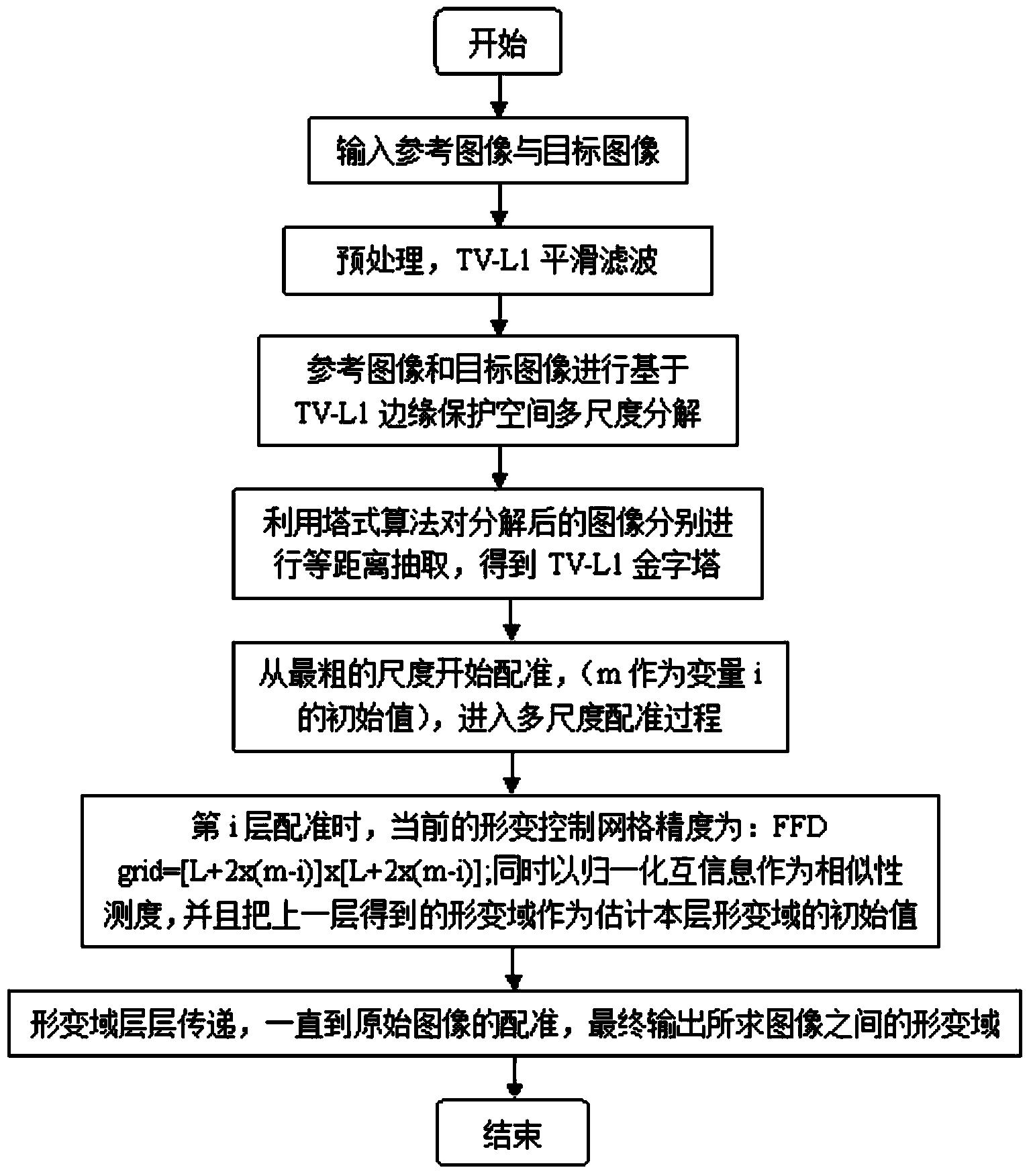Image-guided adaptive algorithm based on edge-preserving multi-scale deformable registration
An adaptive algorithm and edge protection technology, applied in the field of medical image analysis and processing, can solve the problems of restraint application, manual labeling, lack of spatial position information of mutual information, etc., to improve the registration accuracy and robustness, and ensure the speed. Effect
- Summary
- Abstract
- Description
- Claims
- Application Information
AI Technical Summary
Problems solved by technology
Method used
Image
Examples
Embodiment Construction
[0027] The present invention will be further described below in conjunction with the accompanying drawings and embodiments.
[0028] Such as Figure 1-3 As shown, the image-guided adaptive algorithm based on edge-preserving multi-scale deformation registration, the specific implementation steps are as follows:
[0029] (1) Based on the nonlinear diffusion model, establish a multi-scale space with edge protection properties, and decompose the image in multiple scales according to the geometric size of the contour structure in the image; the specific implementation is as follows:
[0030] (a) Preprocessing. Input the reference image and the target image, and use TV-L1 to smooth and filter the image to remove noise and other high-frequency components. The preprocessed images are R(λ 0 ), F(λ 0 );
[0031] (b) R(λ 0 ) and F(λ 0 ) for multi-scale decomposition based on TV-L1 edge-protected space. Suppose the original image I 0 From the contour image I under scale II and the...
PUM
 Login to View More
Login to View More Abstract
Description
Claims
Application Information
 Login to View More
Login to View More - R&D
- Intellectual Property
- Life Sciences
- Materials
- Tech Scout
- Unparalleled Data Quality
- Higher Quality Content
- 60% Fewer Hallucinations
Browse by: Latest US Patents, China's latest patents, Technical Efficacy Thesaurus, Application Domain, Technology Topic, Popular Technical Reports.
© 2025 PatSnap. All rights reserved.Legal|Privacy policy|Modern Slavery Act Transparency Statement|Sitemap|About US| Contact US: help@patsnap.com



